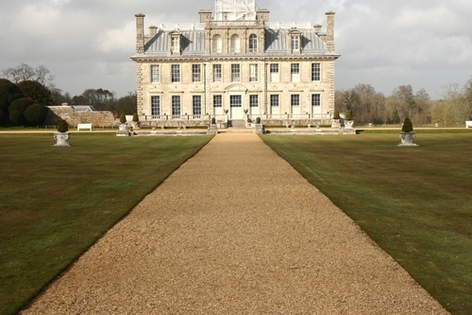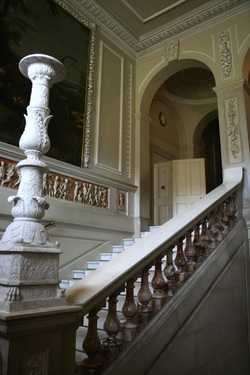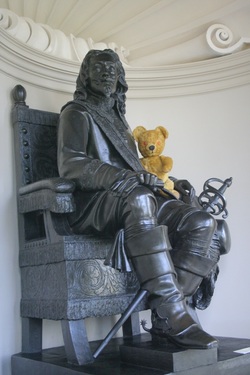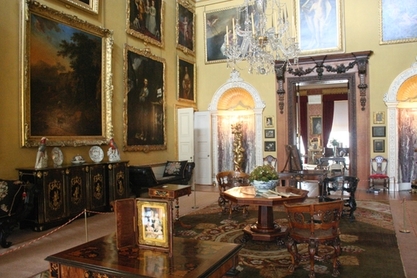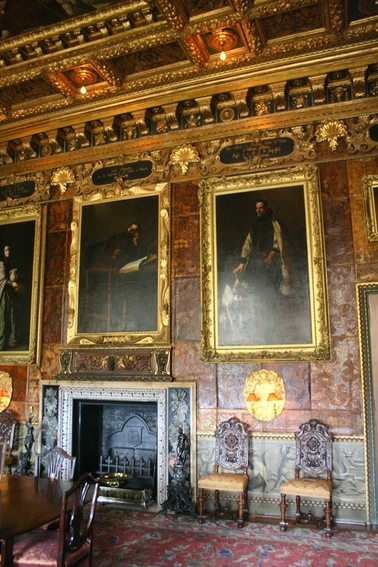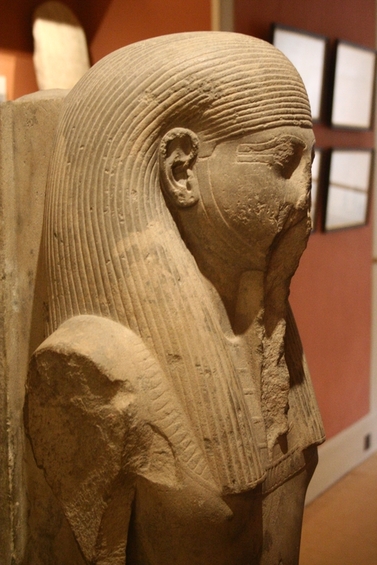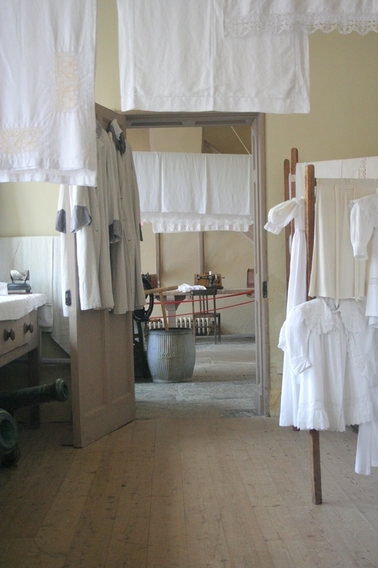Kingston Lacy...
|
Kingston Lacy is an amazing day out. This magnificent stately home near Wimborne is a hotbed of history and packed with artworks and wonders from around the globe. It is also set in some stunning Dorset countryside.
Once the home of one of England’s richest and most influential landowners, Kingston Lacy now belongs to another rich influential landowner in the guise of the National Trust and has been open to the public since the mid-1980s. Kingston Lacy House was built by Sir Ralph Bankes in 1663 after his Mum and Dad’s place, Corfe Castle, was blown to bits by the Roundheads under the orders of Parliament during the English Civil War. Sir Ralph’s Mother was “Brave Dame Mary” who held out at Corfe against the Roundheads during two sieges before she was betrayed. Despite annoying the Roundheads enough for Parliament to order the destruction of her home and castle, her opponents were so impressed with her bravery and tenacity that they presented her with the keys of the castle, which now hang above the fireplace in the library at Kingston Lacy. A magnanimous gesture in victory on the part of the Roundheads no doubt, but given the nature of Lady Bankes’s betrayal is it possibly one tinged with sarcasm? Stories like these abound around every corner at Kingston Lacy and span from the time of Sir John Bankes, who was Chief Justice to Charles the First, through to the present day. If the lands of the Kingston Lacy Estate are included, then the stories go back even further to include Arthurian Legend, the Roman occupation and beyond. In essence, Kingston Lacy was the Bankes’s family home. And like all family homes, over the years they built it and decorated in styles they liked and filled it with family pictures and bits and pieces collected from their travels - nik naks which reflected their interests and personalities. Of course, being landed and wealthy the Bankes family’s choice in décor and ornaments could go way beyond B&Q and Ikea (even if they’d existed at the time!). The walls of Kingston Lacy are adorned with portraits and paintings from some of the best and most famous artists the world has known and the furnishings are equally opulent things of beauty. In the 1830s, William Bankes, a friend of the poet Lord Byron, called in architect to the rich and famous, Charles Barry, to turn the then red-brick Kingston Lacy into a white, stone-faced, Venetian-style palace. The results are fantastic! William Bankes was something of an adventurer and explorer collecting artworks and artefacts from around the world. His was considered to the be the finest and largest private collection of ancient Egyptian items in the country - some of which is now on show at Kingston Lacy. Sadly for William, he never quite got to enjoy the spoils of his endeavours in Dorset. A personal scandal effectively left him as an exile from England for fear of imprisonment or execution (such were the laws of the day). Kingston Lacy house was also the place the Bankes family invited and entertained friends and family. Throughout the centuries, this has included Royalty, great soldiers, such as the Duke of Wellington, and great writers, such as Thomas Hardy, who doubtless gained much useful material for his works rubbing shoulders with the “great and the good” of his day. Not that being considered great or good is necessarily a recipe for happiness. By the time Kingston Lacy and the accompanying Estates, including Corfe, were bequeathed to the National Trust, the grand Venetian Palace of Dorset was falling into disrepair. Another Ralph Bankes was by then the owner and having lost several close members of his family, including his wife, he is said to have become reclusive. The house’s gardens ran wild and various types of rot crept into the woodwork and fabric of the house. With all the rooms there are in this huge “palace”, Ralph ended up living in just four. For whatever reason, it is reported that Ralph’s own children didn’t want to inherit the estate, and so he left the lot: house, 16,000 acres and art collection to the National Trust. The Trust has subsequently spent a fortune on renovating and restoring the house and gardens and opening both to the public, with stunning results. There may be some small irony here. It was, after all, against such grandeur and opulence, among other things, that the Roundheads fought the Cavalier’s in the Civil War. The same war that resulted in the “need” for Kingston Lacy House in the first place as a replacement for Corfe Castle. Had Charles the Second left him in it after the Restoration of the Monarchy, it’s easy to think that the arch Puritan, Oliver Cromwell would be spinning in his grave! But in this case, his loss is the nation’s and Dorset’s gain - for at Kingston Lacy there is now masses for the masses to do and see! Kingston Lacy is a doorway into a world of wonders of history, of art and of the ancients. Possibly not a visit for very young children, but there are activity trails designed for kids of most ages. There is certainly material and information to be gleaned from the house that will help kids with the national curriculum and there is a very handy quiz sheet that will help to engage almost anyone. And if not, most rooms have an excellent information sheet and a real-life “explainer” to help bring the character of this truly magnificent building and its wonders to life. Ask them stuff, and you’ll be amazed at the stories they can tell you! And that’s the real beauty of Kingston Lacy. It is a visit that allows you to follow the stories that interest you. If history is your thing, then there are a thousand leads you could follow. For the artist, there are paintings, décor, ornate ceilings, murals and more besides. And for people who are interested in people, there are more human interest stories to be found at Kingston Lacy across the centuries than you can possibly imagine - truth really is stranger than fiction! The ornate gardens will please those with green fingers and there are stunning walks in the gardens and woods for those who want some fresh air exercise, which is available in abundance in the grounds of the House and nearby Badbury Rings. There are onsite eateries and coffee facilities in the old stables as well as places to picnic. Kingston Lacy is definitely at least a half-day visit, but could easily be more and is best done unhurried. It is one of those places where the more you look the more you see. And don’t be concerned that it is all high brow and high society. There’s plenty of focus on life below stairs too. Ultimately, to use the National Trust’s own words, when Ralph Bankes left Kingston Lacy to the Trust it was their “largest ever bequest” and included one of Britain’s “finest private collections of paintings”. Impressive stuff indeed, but if that’s all you go for, you’ll only have scratched the surface of the stories that lie behind Dorset’s Venetian Palace… |
Kingston Lacy House was built by Sir Ralph Bankes in 1663 after his Mum and Dad’s place, Corfe Castle, was blown to bits by the Roundheads under the orders of Parliament during the English Civil War...."
|
